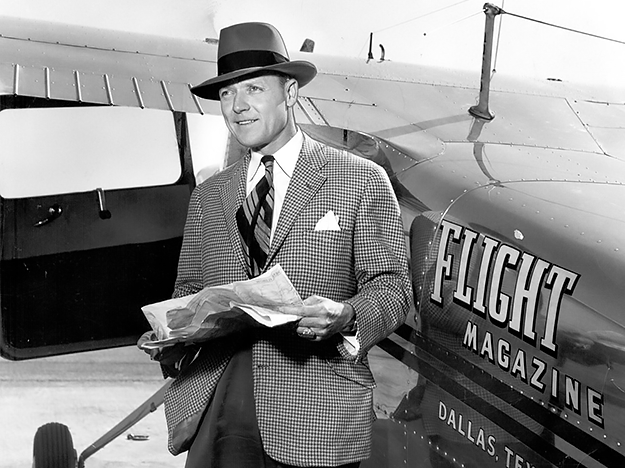George Haddaway was an aviation historian who is in the Texas Aviation Hall of Fame at the Lone Star Flight Museum in Houston, and is credited with founding the Frontiers of Flight Museum at Dallas-Love Field Airport. He used his platform as publisher of Flight Magazine to raise money and awareness for Wings of Hope.
We caught up with his son James, now 74, by phone from his home in Melbourne, FL, while he was planning a reunion of his company from the 5th Marine Regiment, the most highly decorated regiment in the Marine Corps.
Early Memories of Wings of Hope
James grew up in Dallas in the 1950s and ‘60s. He was young when his father joined three St. Louis businessmen to start Wings of Hope, but he remembers his dad entertaining African leaders at their home in the early 1960s.
“I remember a lot of heads of countries in Africa were at the house,” said James. He recalled them discussing the continent’s 10-year drought — “and that was when they started Wings of Hope,” he said.
James also remembers something else that was unique about the newly founded nonprofit: “They had nuns flying the airplanes.”
A Publisher and Promoter
George graduated from the University of Texas at Austin with a degree in journalism and started Flight Magazine in Dallas in 1934. Flight had a loyal following of aviators — and for good reason. James said George “had a list of every airplane owner in America, and anybody who owned an airplane would get his magazine free.”
“He sold it in ’76 to Miller Freeman Publishing,” said James. “Forty-two years under the staff. It was the oldest aviation magazine in the world under the same staff.”
During his more than four decades as a publisher, George met most of the country’s aviation greats, including Charles Lindbergh, Jimmy Doolittle, Frank Hawks, Roscoe Turner, Art Chester and Wiley Post.
George used his prominence in the publishing world to promote causes for which he was passionate. He believed that civilian aviation had a role to play if the U.S. got drawn into the war in Europe, and he led the push for the creation of a Civil Air Patrol (CAP) in September 1941. The CAP was officially formed on Dec. 1, 1941, just six days before the attack on Pearl Harbor. Haddaway was made a captain of a unit assigned anti-submarine patrol and ship escort missions over the Gulf of Mexico until 1944 when the U.S. Navy and Army Air Force took over. He was promoted to major and awarded the Distinguished Civilian Service Medal.
“After World War II, he was Harry Truman’s advisor for civil aviation,” said James. “We even lived in Georgetown for a while, from ’50 to ’52, when I was little.”
James recalled his dad having a more than one brush with history.
“He flew a Boeing S-307 out of Cuba the day Castro took over,” said James. “He went to Cuba a lot back in the ‘50s. He liked cigars — I know that.”
George also knew the Shah of Iran who gave him a Persian rug which he kept at his house in Tioga, Texas — the same house where Gene Autry was born: “He called it a ranch. But it was just 100 acres there where he got away from Dallas. He had five horses up there,” James said.
James also remembers his dad’s love of flying and travel: “Dad always had a Cessna 172. He was a recreational pilot but he flew it for business, too. He’d go from town to town for his magazine.”
Many times, James was lucky enough to tag along: “I flew a lot of places with my dad. After I returned from Vietnam, in ’67 or ’68, we landed a little short takeoff and landing plane in the parking lot at Caesar’s Palace at an airshow there. We traveled all around.”
A Chili Aficionado
Commemorating his death in 1998, Air-Log, a publication out of the University of Texas at Dallas, noted that Haddaway co-founded the Chili Appreciation Society International in 1946. The article quoted Haddaway: “Without chili, aviation would have died back in the Twenties and Thirties because that’s what kept the barnstormers going.” He added, “Every little ol’ airport had its green-fly chili joint where you could fill your gut for fifteen cents, including catsup and crackers.”
Haddaway was a larger-than-life figure who left of big mark on the worlds of publishing and aviation. Wings of Hope was the lucky beneficiary of his gift for promoting causes about which he was passionate.
“He managed to get a lot of people to donate a lot of aircraft,” said James. “He was good at that.”

